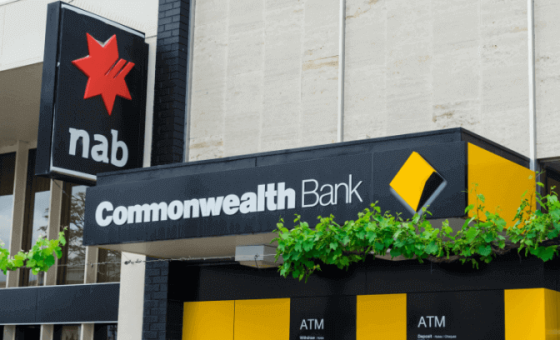Home Loans for first Home Buyers
The table below displays a range of home loans with different rates and features for first home buyers from our Online Partners.

 Owner occupied
Owner occupied
 20% min deposit
20% min deposit
 Redraw facility
Redraw facility
 Owner occupied
Owner occupied
 20% min deposit
20% min deposit
 Redraw facility
Redraw facility
 Owner occupied
Owner occupied
 10% min deposit
10% min deposit
 Redraw facility
Redraw facility
 Owner occupied
Owner occupied
 20% min deposit
20% min deposit
 Redraw facility
Redraw facility
 Owner occupied
Owner occupied
 20% min deposit
20% min deposit
 Redraw facility
Redraw facility
 Owner occupied
Owner occupied
 20% min deposit
20% min deposit
 Redraw facility
Redraw facility
 Owner occupied
Owner occupied
 10% min deposit
10% min deposit
 Redraw facility
Redraw facility
 Owner occupied
Owner occupied
 10% min deposit
10% min deposit
 Redraw facility
Redraw facility
 Owner occupied
Owner occupied
 20% min deposit
20% min deposit
 Redraw facility
Redraw facility
 Owner occupied
Owner occupied
 20% min deposit
20% min deposit
 Redraw facility
Redraw facility
 Owner occupied
Owner occupied
 10% min deposit
10% min deposit
 Redraw facility
Redraw facility
Showing 12 of 448 results
To see more results adjust the filters above
Unsure of a term in the above table? View glossary
The initial results in the table above are sorted by Star Rating (High-Low) , then Comparison rate^ p.a. (Low-High) , then Provider Name (Alphabetical) . Additional filters may have been applied, which impact the results displayed in the table - filters can be applied or removed at any time.
What is a first home buyer loan?
A home loan is an amount of money lent by a bank or other financial institution to finance the purchase of a residential property. A first home buyer loan is a loan that is designed for people who are looking to take their first step onto the property ladder.
Home loan lenders will often offer special deals and discounts to attract first home buyers. There are typically a range of deals and offers available, from rebates on the purchase price of the home to reduced or waived ongoing or annual fees.
What is the best first home loan?
When it comes to home loans, the ‘best’ choice for you will come down to your individual circumstances. Canstar has put together a list of things to consider, to help frame your decision making:
- Loan needs: How large is my deposit and what is the value of the property I want to buy?
- Type of loan: What’s the best loan for my situation?
- Ongoing cost of the loan: What is the interest rate on the loan?
- Upfront costs of the loan: What fees apply to the loan?
- Conditional costs: Do I need Lender’s Mortgage Insurance (LMI)?
- Loan features: Does the loan have beneficial features?
Explore further: What To Look For In A Home Loan: 6 Step Checklist
What is the best way to get a first home loan?
In general terms, the process of purchasing a first home, including applying for finance, can be broken down into a number of steps.
These are:
- Save for a deposit, keeping in mind the fact that with a 20% deposit or more, you will not need to pay LMI
- Research the available government concessions like stamp duty discounts and first home buyer schemes to see if you are eligible for any.
- Consider your budget and how much you would ideally like to spend on a first home, as well as the type of home you wish to purchase.
- Gather the documents you’ll need to apply for a home loan, such as bank and credit card statements and payslips.
- Consider applying to a home loan lender for pre-approval. This is an optional step, and it’s important to note having pre-approval doesn’t guarantee you’ll be officially approved for a home loan, but it can give you an idea of where you stand financially and how much you will be able to borrow for a home.
- Start the hunt for a house or apartment that fits your particular needs and budget, and make an offer on it or bid at auction.
- Get unconditional approval from your lender to allow you to borrow the funds for the purchase of the property.
- Begin repaying your mortgage once your purchase of the property settles.
Learn more: How to apply for a home loan
Frequently Asked Questions for First Home Buyers
Latest in home loans
Canstar Star Ratings and Awards
Looking for an award-winning product or to switch providers or brands? Canstar rates products based on price and features in our Star Ratings and Awards. Our expert Research team shares insights about which products offer 5-Star value and which providers offer outstanding value overall. We also reveal which providers have the most satisfied customers in our dedicated Customer Satisfaction Awards.
Explore more home loans:
Refinance Home Loan Comparison
Pre-approval home loans
Compare Investment Home Loan Rates
Compare low deposit home loans
Compare some of the best variable rate home loans
Summerland Bank Home Loans & Rates
Home loan options
Family home guarantee scheme
Unloan home loans
Compare Fixed Rate Home Loans
Compare Construction Home Loans
Compare 90% LVR home loans
About the authors
Karen Yang, Senior Content Production Specialist

Joshua Sale, GM, Research

As Canstar’s Ratings Manager, Josh Sale is responsible for the methodology and delivery of Canstar’s Home Loans Star Ratings and Awards and the Home Loan Refinance Awards. With tertiary qualifications in economics and finance, Josh has worked behind the scenes for the last five years to develop Star Ratings and Awards that help connect consumers with the right home loan for them.
Josh is passionate about helping consumers get hands-on with their home loans, always reminding home buyers that finding the right loan can be as important for your finances as negotiating a fair property purchase price. Josh has been interviewed by media outlets such as the Australian Financial Review, news.com.au and Money Magazine, discussing topics including home loan equity and wider finance trends.
When it comes to Josh’s own property journey, the home loans expert once bought two houses in the same transaction when he ensured the cubby house his daughter loved was listed on the purchase contract for his new home.
You can follow Josh on LinkedIn, and Canstar on Twitter and Facebook.
Important information
For those that love the detail
This advice is general and has not taken into account your objectives, financial situation or needs. Consider whether this advice is right for you.










